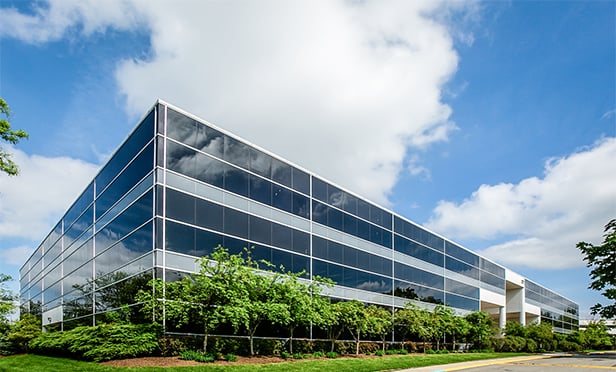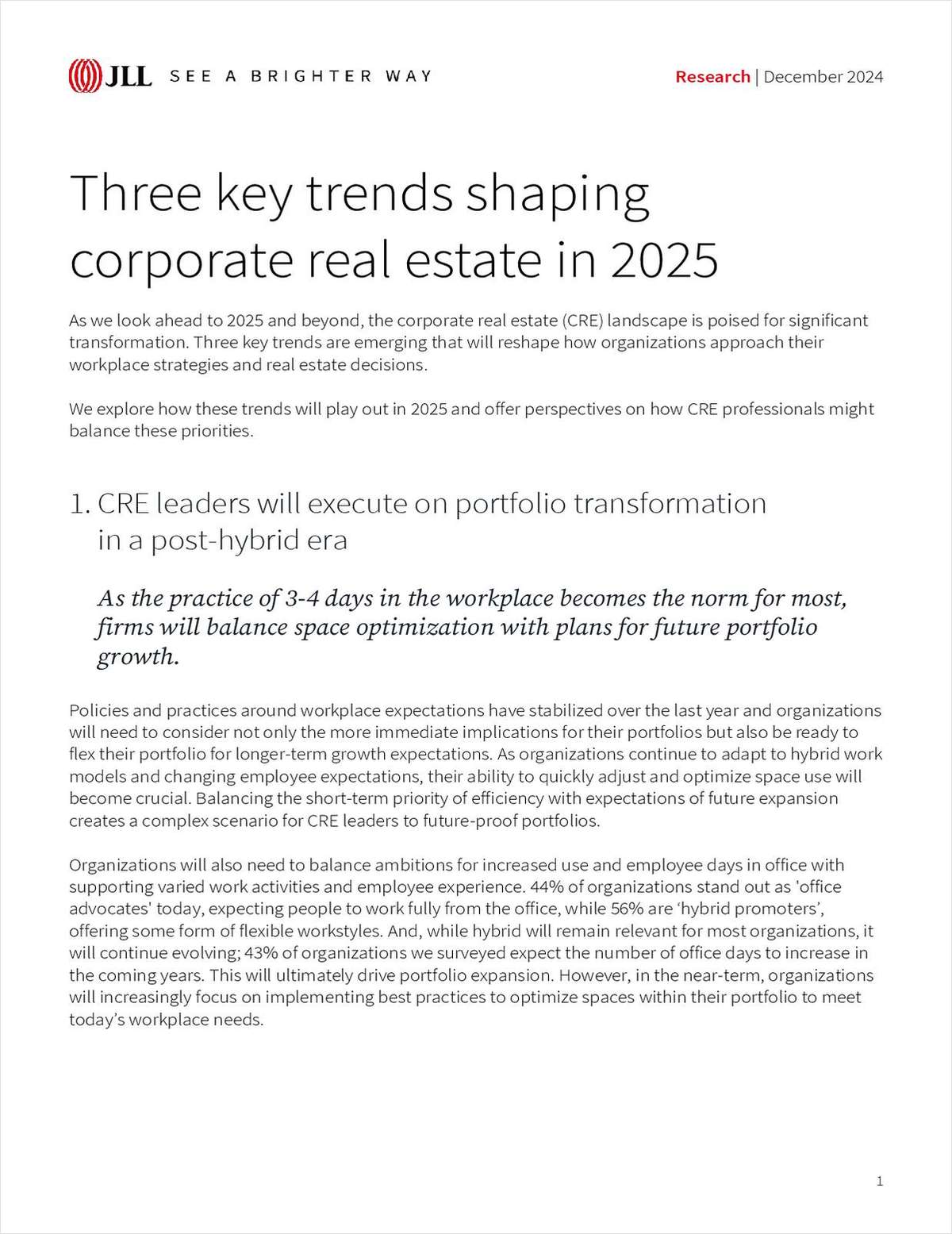
Vacancy rates have edged up and rents have retreated across commercial property sectors in Detroit, though the office and industrial markets have registered the most dramatic softening in recent years. In addition to another year of operational issues, Detroit commercial property owners will have to face the challenges associated with refinancing maturing debt, a difficult task even in markets poised for growth.
Roughly $1.5 billion of CMBS debt, or 17% of the total outstanding in the Detroit marketplace, is slated to mature during 2010 and 2011, nearly 16% of these loans already report debt service coverage ratios of less than 1.0. Since straight term extensions will do little to alleviate the underlying issues for these at-risk loans, and further hits to NOIs are anticipated in the near term, heightened foreclosure activity is likely to occur.
Persistent economic woes, softening commercial real estate fundamentals and tight credit markets will result in growing distress in the Detroit marketplace. As of early 2010, the metro area already ranked second behind Las Vegas in total distressed asset dollar volume, when scaled to the market's size. In order to avoid foreclosure-related losses, banks
are opting for loan extensions and modifications whenever possible, though workouts typically require additional equity contributions from the borrower.
Given weak near- term prospects for the Detroit economy and commercial property fundamentals, many at-risk borrowers may be unwilling or unable to satisfy these requirements. In instances where modifications are not possible, lenders may consider a short sale to avoid potential deeper losses, but the more dire cases will continue
to move into foreclosure. Most of the REO deals that have come to market so far involved lower-quality properties with significant operational challenges, given the state of Detroit's economy and commercial real estate investors' current flight to quality, lenders have to incur significant losses when disposing of these reclaimed properties.
Compared to other core property sectors in Detroit, apartments will continue to fare best, with vacancy starting the year only modestly higher than the national average. Apartments account for a comparatively minimal amount of the distressed dollar volume in Detroit as a result. While this trend will continue through 2010, more apartment assets will become troubled as shadow rentals compete for tenants, the metro area loses households and inexpensive housing and the extended tax credit draw some renters to homeownership.
More affordable areas of Macomb County and the Novi/Livonia submarket will be affected most, posting the greatest increases to vacancy this year. Multifamily properties in these areas, along with older assets in the city of Detroit, will account for the majority of distress in the local apartment market again this year.
The local hotel market, which depends heavily on the auto industry and convention business, accounts for a full third of the local distressed property volume. In addition to several Red Roof Inn and Extended Stay properties, a few large full service hotels have encountered problems. The largest is the Hyatt Regency Dearborn, a 772-room property located near Ford's world headquarters, which was reclaimed by the lender in late 2009. Taking into consideration forecasts for weak local room demand over the foreseeable
future, marketing materials listed several potential alternative uses for the property, including multifamily, seniors housing and even student housing, the results of the first-quarter call for offers have yet to be released. While the Hyatt continues to operate as a
hotel property for now, the 400-room Riverside Hotel in Downtown Detroit, formerly the Pontchartrain Hotel, remains shuttered following its foreclosure last summer. By dollar volume, retail accounts for 26% of the distressed commercial real estate in the Detroit market. Despite some deeply discounted pricing, investor demand for local retail assets
remains limited due to ongoing local economic woes. Most of the retail REO properties in the marketplace are less than 100,000 square feet, though several large malls remain at risk due to maturing debt, owner bankruptcies or poor performance.
The largest distressed retail property is the aging, 1.4-million-square-foot Summit Place Mall in Waterford, which now sits nearly empty after losing all but one of its anchor tenants, and faces an uncertain future. Within the CMBS sector, more than 13% of the retail debt is 60-plus days past due and delinquency will rise further in the near term as loans mature
and operational challenges persist, underpinning expectations that more REO activity will occur this year.
After five consecutive years of rising vacancy and falling rents, troubles continue to mount for Detroit office properties. Several large downtown properties sit atop the list, including the 5.5 million-square-foot Renaissance Center, which is owned and partially occupied by General Motors. Roughly 63% of the CMBS loans backed by Detroit office assets were originated between 2004 and 2007, when sales were at peak levels and prices increased by approximately 20%. Transaction velocity has since declined dramatically, and property prices have fallen more than 30%. As a result, many owners are underwater on their office investments in the Detroit metro area and more distress will filter through the pipeline. As of early 2010, over 10% of outstanding CMBS loans report loan-to-values of 100% or more and 14% are either past due or REO.
Meanwhile, Detroit's weakened economy and reliance on the US auto industry will lead to another challenging year for commercial real estate owners. Within the metro area, housing market conditions will remain soft through 2010 and employment will contract for the 10th-consecutive year. Auto manufacturers will contribute to job cuts again this year, but losses should slip to the lowest level since 2004, as Ford and GM both announced plans to increase production modestly in 2010. During 2009, more than 30,000 auto-related positions were eliminated, a 15% reduction to the industry's payrolls. Commercial developers, responding to deteriorating economic conditions, have reduced construction activity throughout the Detroit metro area, particularly in the apartment and office sectors. The lack of new development practically eliminates any new supply- related pressure on vacancy rates. Still, demand for space will also remain limited this year, hampered by job losses and one of the highest unemployment rates in the nation. As of early 2010, Detroit's unemployment rate hovered around 15.5%, well above the national level of 9.7%. One of the greatest threats to local real estate fundamentals during the latter part of 2010 could be the resumption of job growth at the national level, which may draw more residents away from the metro area.
GlobeSt.com News Hub is your link to relevant real estate and business stories from other local, regional and national publications.
Want to continue reading?
Become a Free ALM Digital Reader.
Once you are an ALM Digital Member, you’ll receive:
- Breaking commercial real estate news and analysis, on-site and via our newsletters and custom alerts
- Educational webcasts, white papers, and ebooks from industry thought leaders
- Critical coverage of the property casualty insurance and financial advisory markets on our other ALM sites, PropertyCasualty360 and ThinkAdvisor
Already have an account? Sign In Now
*May exclude premium content© 2025 ALM Global, LLC, All Rights Reserved. Request academic re-use from www.copyright.com. All other uses, submit a request to [email protected]. For more information visit Asset & Logo Licensing.








